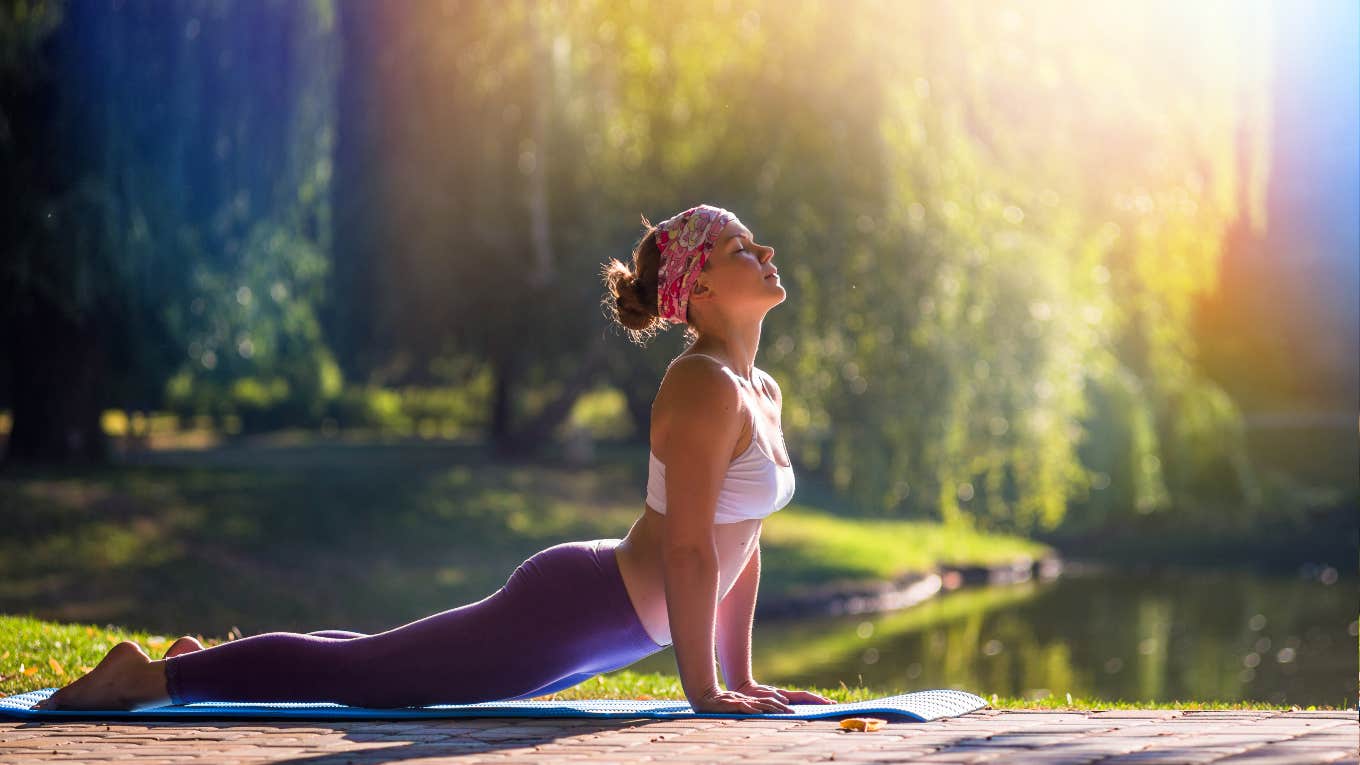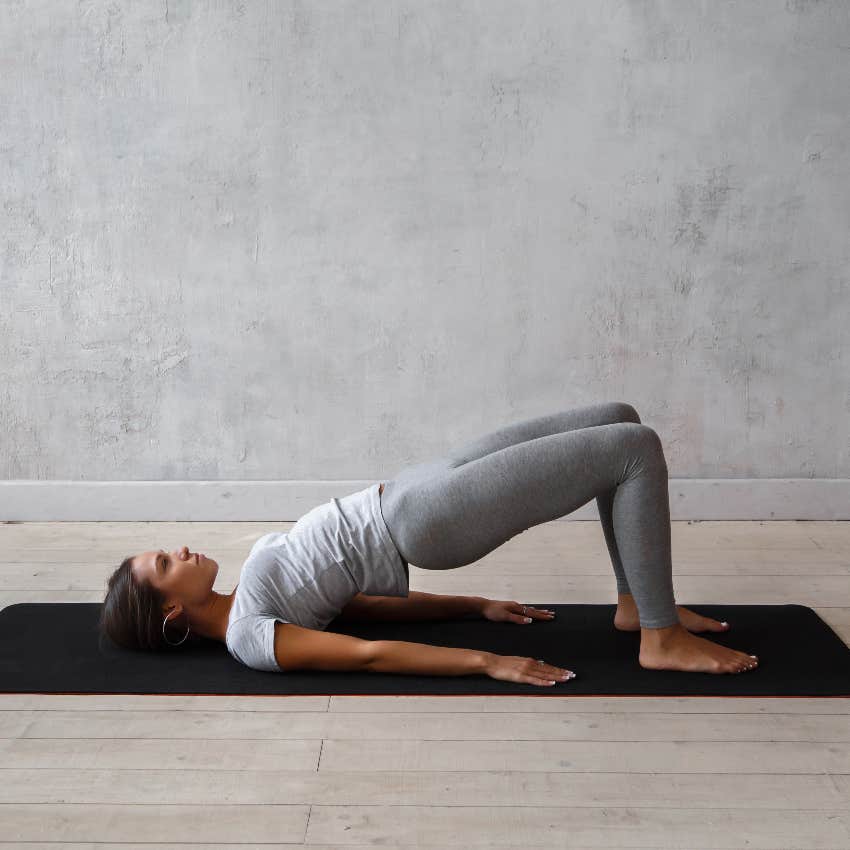4 Simple Yoga Poses That Can Instantly Calm Your Nerves
If there’s any remedy for relieving stress, yoga is the way to go.
 lkoimages / Shutterstock
lkoimages / Shutterstock These days, life can be rather stressful, and people everywhere are searching for ways to calm their nerves amidst the chaos of everyday life. For many, yoga might be part of the solution.
Yoga is not only a physical practice, but it’s a mental and emotional one, too. The practice emphasizes the balance of the mind, body, and spirit, through its continuous mindfulness and attention to breath. Incorporating these simple poses into your routine can help calm the nervous system, ease anxiety, and promote relaxation.
Anna Papaioannou, known as AnnaTheAnxietyCoach on Instagram, took to the app to share some calming yoga poses and how they can help regulate the nervous system.
An anxiety coach shared four yoga poses that can help you find calm and peace in your life:
1. Child’s pose
The child’s pose, also referred to as Balasana, is a forward-folding grounding pose that stretches the back and hips. It’s known as a calming pose for the name in itself — balling up into a childlike position with your forehead resting on the ground can help you quiet the mind and reach a more relaxed state.
“Physically, this pose helps release tension in the back, neck, and shoulders, where many of us hold stress,” Papaioannou wrote in the post.
A safe and gentle pose that’s easy for beginners to practice, the child’s pose can lower your heart rate and blood pressure, reducing levels of anxiety and stress.
2. Legs up the wall pose
Legs up the wall pose, or Viparita Karani is a pose that many of us unintentionally practiced as children. This pose is particularly focused on relieving tension in the lower back.
 Photo: Jantira Namwong / Shutterstock
Photo: Jantira Namwong / Shutterstock
By finding a comfortable and quiet place to lie your back on the ground and lift your legs against the wall, the pose can help with circulation in the body, soothing your legs and reducing swelling in your ankles and feet. The pose naturally activates the parasympathetic nervous system, which helps to alleviate anxiety, headaches, and insomnia. Incorporating this pose into your night routine can help improve your sleep.
3. Bridge pose
This backbend pose, Setu Bandha Sarvangasana, uses all four limbs to create a position that can be both strengthening and restorative.
To practice this position, lie on your back with your knees bent and your feet planted flat on the ground. Bring your feet close to your glutes, and let your arms rest beside your body with palms facing down. Lift your hips, and you’ll feel a gentle stretch in your chest, shoulders, and abdomen.
 Photo: soul_studio / Shutterstock
Photo: soul_studio / Shutterstock
This pose is additionally used in many workouts, for its focus on strengthening the body’s back muscles, glutes, thighs, and ankles. Practicing bridge pose regularly can also improve posture and “counteract the effects of prolonged sitting and slouching,” which is perfect for those of us who spend most of our time hunched over a laptop.
4. Crocodile pose
Unbeknownst to the inexperienced individual, what appears to be a sleeping position to many can offer a deep stretch in the upper body. The pose, also known as Makarasana, involves lying flat on your stomach with your head resting on crossed arms. This simple pose can offer relief in your lower back and open up the chest and shoulders.
“The abdomen rests on the floor, which creates an expansion into the lower back and ribs," Papaioannou explained. "This is an excellent pose for insomnia, reducing tension in the shoulders and spine, and improving poor posture habits.”
Usually practiced at the end of a yoga session, the purpose of this pose is to relax the body and mind and release tension.
Experiment with simple yoga poses to improve your flexibility and mental stability.
While these poses are simple and easily accessible, it’s necessary to practice the correct forms to avoid any health complications. Look into resources online and attend local yoga classes to gain a better understanding of the benefits of practicing yoga for stress relief and balance.
It's important to note that yoga goes beyond physical activity, rather it involves active breathwork and a state of mindful meditation. By integrating these physical elements with the mental practice of mindfulness for a short period of time every day, one can achieve a state of relaxation that will follow them in their daily routines.
Francesca Duarte is a writer on YourTango's news and entertainment team based in Orlando, FL. She covers lifestyle, human-interest, adventure, and spirituality topics.

